Antoni Gaudí is Barcelona’s most famous son but one of his collaborators, Jujol, created buildings with a lighter touch, and humour, in its surrounding villages.
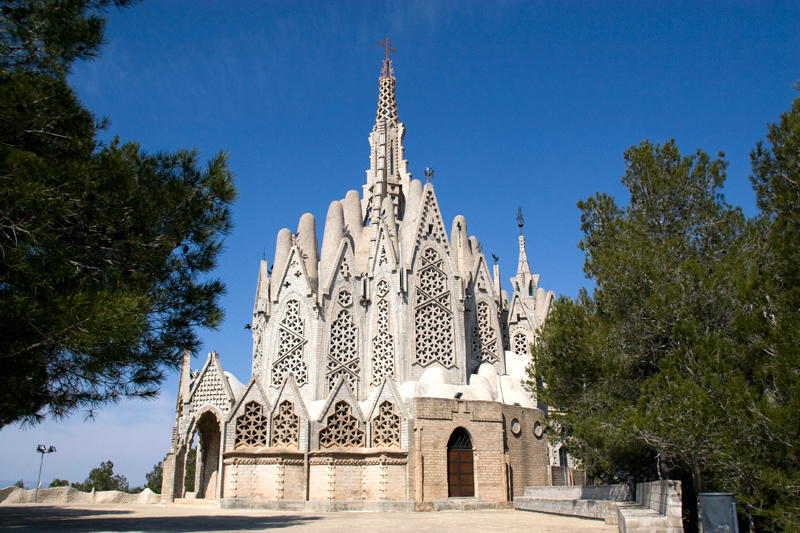
The old man fiddled with the keys, peered rheumily in turn at three or four, then with a grunt chose one. The key slipped into the ornate ironwork keyhole and the door opened. I stepped into a deep gloom and the caretaker shuffled off through the darkness.
A few seconds later, with the clank of ancient switches being thrown, the lights came on one by one. First, an extravagantly decorated wall emerged, then an outrageous chandelier and finally a soaring roof. The work of architect, sculptor and painter Josep Maria Jujol was revealed.
Think of Barcelona and you think of tapas, beach, football, stag parties and, of course, Antoni Gaudí. His work defines the city for many visitors. His wild modernista designs seem to lie on each street corner, marked by a gaggle of appreciative tourists.
But deeply religious Gaudí was an austere character: it was left to Jujol, his little-known collaborator, to bring a lightness of touch and humour to many of his most famous works. The broken tile mosaics of the city’s Park Güell, for example, were made by him.
Jujol was the obvious choice to complete La Sagrada Família after Gaudí carelessly stepped in front of a tram in 1926 – but he never got the job, apparently too modest to shoulder his way to the front of the queue. Never mind, if you make the effort to get beyond the pickpockets and tat of Las Ramblas, you can discover Jujol’s own mini “Sagrada Famílias” – and these ones have even been finished.
Modernisme was huge in the early 20th century. Tycoons in Catalonia raced each other to build homes, and factories, in the latest style. Even their fusty country farmhouses were given a modernista makeover. Inspired, villagers in a couple of places near Barcelona decided to keep up with the landowners and turned to local lad Jujol to build them churches … on a budget.
Drive west from Barcelona and you are soon in wine country. Columns of vines march across the gentle hills of Penedès and I followed them to the village of Vistabella.
Even from a distance it is obvious that Vistabella is different from the dozens of other little settlements around here. The spire of a church rises high above the village’s handful of homes – far bigger than seems probable for such a tiny place.
The church had disappeared behind buildings by the time I’d parked. I walked round a few corners and there it stood – like someone had lopped a bit off La Sagrada Família and dropped it into this sleepy hamlet. Windows of all shapes and sizes studded the walls – diamonds, stars, circles – and rocks and stones burst out of the walls, like the church’s flesh was exploding through its skin. A couple of children took me to the home of the caretaker, Josep Rovira, and roused him from his siesta.
Though he had good reason to curse me for his broken snooze, Rovira gave me a passionate tour of El Sagrat Cor. He explained that it had been built between 1918 and 1924, on a shoestring. The local farmers had collected stones from their fields for its construction. Rovira pointed to a fantastical chandelier and said it had been made out of empty condensed milk tins. Candlesticks had been made from used oil cans.
The cupola soared high above us, intricately supported by catenary arches – the backbone of the Sagrada Família. Rovira explained that Jujol wanted the building to be sin vigas, sin techos (without beams and without ceilings).
Sun shone softly through window panes of alabaster shaded from milky white to delicate pink.
Despite some damage inflicted by anarchists during the civil war, many of Jujol’s delicate paintings on the walls, from angels to bunches of grapes, survive. Rovira took us into one dark corner to show us a beam marked with Jujol’s signature. I signed the visitors’ book, just a couple of pages on from John Malkovich – the actor, Google later revealed, is a huge Jujol fan.
We stepped outside and our guide looked proudly back at the church and said he dimly remembered meeting Jujol when he was a boy.
I headed north across the Campo de Tarragona and from this plain, near the village of Montferri, rose the second remarkable example of Jujol’s dedication to god and the common man. The Santuari de Montserrat sits like a fairytale castle on a hill.
Again, it was built on a budget but unfortunately this time money ran out. Work was started in 1926 but stopped a few years later. The church was not completed until the 90s, long after Jujol’s death in 1949 but to his original plans. Hundreds of tiny heart-shaped red and yellow windows circle the walls and dozens of metal gargoyles fit for a Tim Burton film glower menacingly down. Stubby finger-shaped vaults around the central tower are intended to recall the peaks of mystical, spiritual Montserrat, just north of Barcelona.
Sadly, the church was closed and there was no aged caretaker to wake from slumber. It is open on Saturday and Sunday mornings, but I had to make do with peering through its glass door at a complex series of arches that made it look as though, by comparison, Gaudí had only a GCSE in geometry.
References to wine feature in Jujol’s work, but he left it to another modernista architect to create a “cathedral” to the vine. Step inside the Co-operative Wineryin L’Espluga de Francolí by Lluís Domènech i Montaner and a church-like silence descends. Buttresses and arches support the vast roof and light from a giant stained-glass window filters on to the towering stainless steel tanks of fermenting wine.
I picked up a couple of bottles – but not Penedès. I was now in one of Spain’s least-known wine areas, the Conca de Barberà. I wandered the beautifully preserved medieval centre of Montblanc, the area’s capital. Its big claim to fame is that Saint George (Sant Jordi) slayed his dragon here. Every other bar or restaurant seemed to be themed: think dragon burgers and you get the idea.
A few miles west lies the ideal antidote to modernista overload: the Cistercian monastery of Santa Maria de Poblet. In the 12th century the hard-working order instigated an era of austerity that would make George Osborne blush. They loved architecture but tempered their nasty worldly ambitions by stripping their buildings of all frills and decoration. The monastery is massive, but simple and perfectly executed.
One recent addition made me smile, however. A long iron railing on a staircase was elaborately twisted to resemble the body of a dragon. I suspect the monks would have sucked their teeth in disapproval, but I’m sure Jujol, too, would have smiled too.
Richard Eilers.

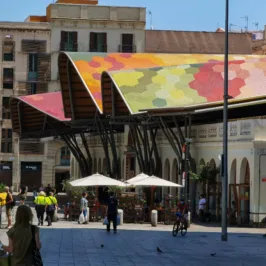


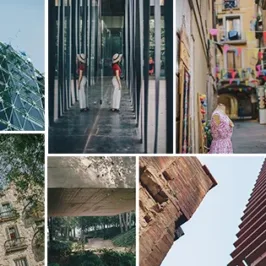
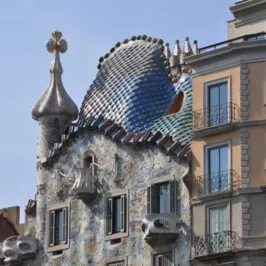
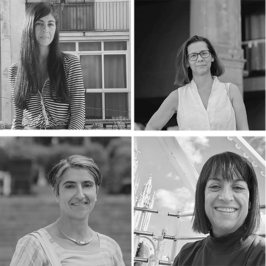
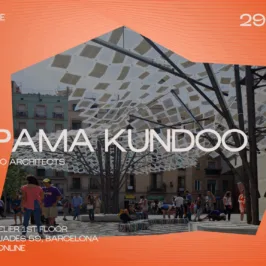

Leave a Reply